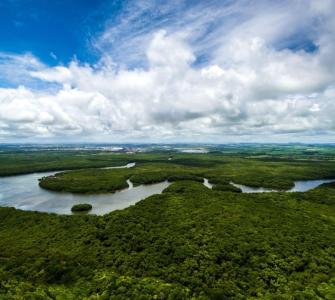The global economic and financial sectors have only begun to acknowledge the significant nature-based risks inherent in all industries, especially those dependent on the Amazon Region’s environmental health. The Amazon is a strategically important region to protect because of its biodiversity, climate change mitigation potential, and the vast economic value the region provides in ecosystems services and raw materials.
In the last few decades, several financial instruments have emerged to help finance the protection of the Amazon’s forests; some of them can be found in more mature capital markets, while others are still in an experimental phase. To determine which mechanisms will be the most effective in protecting and managing the Amazon’s environmental health, the IDB Group recently launched Amazonia Forever, “a holistic umbrella program that aims to scale up financing, share strategic knowledge for decision-makers, and enhance regional coordination to accelerate the sustainable, inclusive and resilient development of the Amazon region”(iadb.org).
Conservation Strategy Fund (CSF) contributed to this initiative by identifying, analyzing, and prioritizing existing and potential innovative financial instruments and mechanisms for conservation in the following countries of the Amazon region: Bolivia, Brazil, Colombia, Ecuador, Guyana, Peru, Suriname, and Venezuela.
This study included an analysis of financial mechanisms, supported by natural capital, that promote the mobilization of resources for the restoration, conservation, and sustainable management of the Amazon biome.
CSF economists categorized each mechanism according to regional land or territorial regulations, rights of use, and Payments for Ecosystem Services. They also examined national and international regulations, market standards, international best practices, and environmental and social integrity standards.
Results
CSF delivered an advisory roadmap tailored to each country within the Amazon biome, providing key information to guide governments and decision-makers in mobilizing funds to finance the restoration, conservation, and sustainable management of Amazonian ecosystems for the benefit of local communities.
CSF proposed a regional financial architecture based on an analysis of scalability and replicability, distinguishing between Level 1 mechanisms (those that mobilize resources at scale) and Level 2 mechanisms (territorial instruments with socio-productive inclusion). Comparative experience shows that institutional maturity and regulatory quality are more decisive for success than the volume of financial resources mobilized.
It is concluded that the most promising mechanisms are not necessarily the most complex, but those that succeed in articulating actors, scales, and functions, incorporating territorial legitimacy, operational efficiency, and environmental sustainability. This vision points toward a new paradigm of financial innovation centered on people and territories.
This work was possible with the support of the Inter-American Development Bank.
_
Photo: Amazon Forest, Gustavo Frazao, Shutterstock

